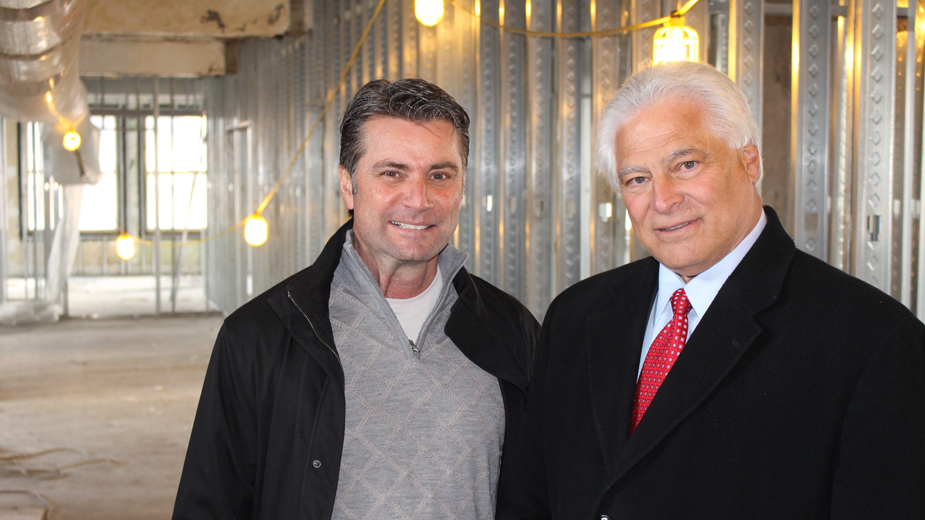Never Too Early to Begin Succession Planning
After a business owner has devoted many years and thousands, if not millions, of dollars into his company, it can be tough to let go. However, failing to plan for that time can be catastrophic to a company’s longevity and success.
Succession planning is something that most business owners consider “nice to have,” when it should be “need to have,” says Jonathan Lapine, a certified public accountant, certified financial planner and principal with W3 Wealth Management LLC in Warren. Of the 78% of small-business owners who intend to sell their businesses to fund their retirements, fewer than 30% have a written plan, he says.
Succession planning is “extremely easy to kick down the road” because it doesn’t generate a sale, serve a customer or collect a bill. But if owners wait too long to plan, it can be too late when they need one.
“They arrive at a point in their life in which they realize that they want to be retired or want to work less,” Lapine says. “But they feel handcuffed to the business because they don’t have a succession plan.”
This can result in owners, out of necessity, taking a less than attractive offer late in life, he says. Instead of getting the equity they’ve established in selling their ownership share, owners are pushed into a leveraged position of needing to sell to keep the company going.
The most common problem Lapine sees among owners who don’t have a plan is that they tend to just dial down their work. As a result, customers leave and the business suffers. “They see what they’ve worked for decades to build erode right before their eyes,” he says.
The goal of succession planning is to resolve this problem before it starts by maintaining a continuity of service to customers and setting up the company to thrive during the transition of ownership, says W3’s director of business services, Jason Day, QKA. W3 collaborates with HD Davis CPAs in Liberty to help clients design, implement and execute effective succession plans.
Planning begins with the discovery phase, when representatives from both companies sit down with the business owner(s) and prospective successor(s) in a series of detailed interviews. The goal is to clearly define the owner’s financial needs in retirement, learn his desires and what motivates the successor, Day says.
“We take the extra time to really get to know them and what makes them tick, what they enjoy doing and what truly makes them happy,” Day says.
Some owners want to let go of the reins completely and enjoy their retirement. Others want to stay involved and mentor the next generation, but achieve a better balance between work and life. It’s important to identify those goals, he says, but also realize that the plan can be fluid.
“We’ll see business owners who want to stay involved to a certain extent, but then realize how much they enjoy the time off and want to switch from semi-time off to full-time off,” he says. “It’s really about being flexible and knowing that we can make changes on the fly.”
Vetting the Successor
The interviews are an important part of vetting a successor. W3 recommends that clients have a few potential candidates in mind, whether they be family members or employees they want to incentivize to remain with the company for the long term.
Interviewers ask if the employee prefers a stable or variable income, the importance of having a seat at the table, and whether the employee is willing to take on debt to participate. Asking such questions and educating the employees on what it means to be an owner are important in vetting and can be enough to narrow the field.
“From the employee side, it is oftentimes very rosy when you look at the owner, particularly when you look at a successful business,” he says. “The owners know, very differently, that there are plenty of things that keep them up at night.”
W3 helps in the vetting to an extent, but relies on the business owner to know his business, his customers and with whom he is most comfortable handing the company to. Lapine says family-owned businesses need the most third-party mediation. While half of family-owned businesses want to keep it in the family, only a third succeed.
Transitioning a company to a relative is difficult because it’s natural for a parent to want to give aspects of an ownership to a child. But that can’t compete with what the owner needs to get out of the company so he can retire. This can lead to awkward conversations. Through third-party mediation, W3 and HD Davis can give unbiased evaluations of the business and acquiring equity.
“Those conversations are going to happen eventually,” Lapine says. “If we can be the impetus for them so they happen in a controlled environment, then we find that’s a lot better than after the fact.”
One method that has worked successfully is the creation of a hybrid plan where the successors include family and non-family employees. Such a succession plan is proven to be fair and equitable and doesn’t result in animosity, he says.
Financial Planning Is Key
Financial planning plays a key role in building a succession plan that achieves everybody’s goals. Thus, HD Davis is involved with the conversations from the beginning, says Tim Petrey, a CPA and a managing member of the firm.
Owners need to understand the specific tax structures and how they affect the seller and the buyer individually. For example, the tax implications can be very different if the owner is looking to sell his stock in the company rather than the assets. From the owner’s perspective, the tax implications could affect his ability to either walk away and continue with his retirement plan or be forced to jump back into the business.
For the successor, having good financials in place could determine his ability to keep the business moving forward, Petrey says. If the plan isn’t put together properly from the beginning, there might not be enough money, time or energy for a successful transition of ownership or continued operation.
“If you’re using unrealistic numbers or expecting them to meet goals that are unachievable or unattainable, then you’re setting them up for failure before you even start,” he says. “It puts the party taking over the business in a position where they just can’t make it work.”
It’s also important to consider the goals and motivations of the successor, says W3’s Lapine. Motivation differs from person to person – while some are concerned solely with money, having a seat at the table motivates others, he says.
“That’s empowering to them and they don’t necessarily need the money now,” Lapine says. “They may be fine foregoing extra money as a perk to ownership just to know that they can drive and influence the business.”
From there, W3 and HD Davis crunch the numbers to build the formula based on everybody’s goals. W3 uses sophisticated software to calculate how much the owner can expect to get out of the company and how that money should be spent during the rest of his life, depending on his goals.
“The business owner has a large amount of their total wealth tied to this entity,” Lapine says. How it’s extracted – and how much is extracted – determines how successful the owner’s retirement will be. “That is where the financial planning process comes into play.”
Seeing Plan Through to Success
There are certain things a business owner should have in place to ensure a smooth transition. But even if he has identified his potential successors and set a retirement date and whether he wants to stay partially involved with the business, roadblocks can still come up.
One of the biggest obstacles is the owner simply isn’t ready to sell or doesn’t fully trust the next generation taking over the company. Day has seen instances where various owners had different goals and clashed with their successors over how things should be carried out.
“When owners aren’t willing to be flexible, it can create tension making them unwilling to budge,” he says.
Open lines of communication and an open dialogue lead to the most successful plans, Day says. Freely sharing ideas, fears and thoughts help W3 overcome the situations that hold up the process. It’s also important to keep business owners on-task with a structured meeting schedule that coordinates meetings with several entities, including CPAs and estate attorneys.
“The plan itself can take up to a year,” he says. “We like to start 10 years or so before an owner is going to retire. You almost can’t start too early.”
Once a plan is put together, it is reviewed with the business owner and the successor to get everybody’s feedback. After the plan is adjusted to everyone’s liking, the necessary legal documentation is drawn up and execution can begin.
Following a year of implementation, W3 conducts a wellness check to see how things are progressing and to identify any additional roadblocks, Lapine says. Those roadblocks can be some of the parties involved not following through with the defined process, or misunderstanding some aspects of the plan. Usually a mediated discussion resolves such issues.
“We need to respect that this is a massive undertaking to everyone involved,” he says. “As best as you can work to iron out all possible differences, there’s always something that’s unique that may pop up that just needs to be talked through.”
Copyright 2024 The Business Journal, Youngstown, Ohio.


